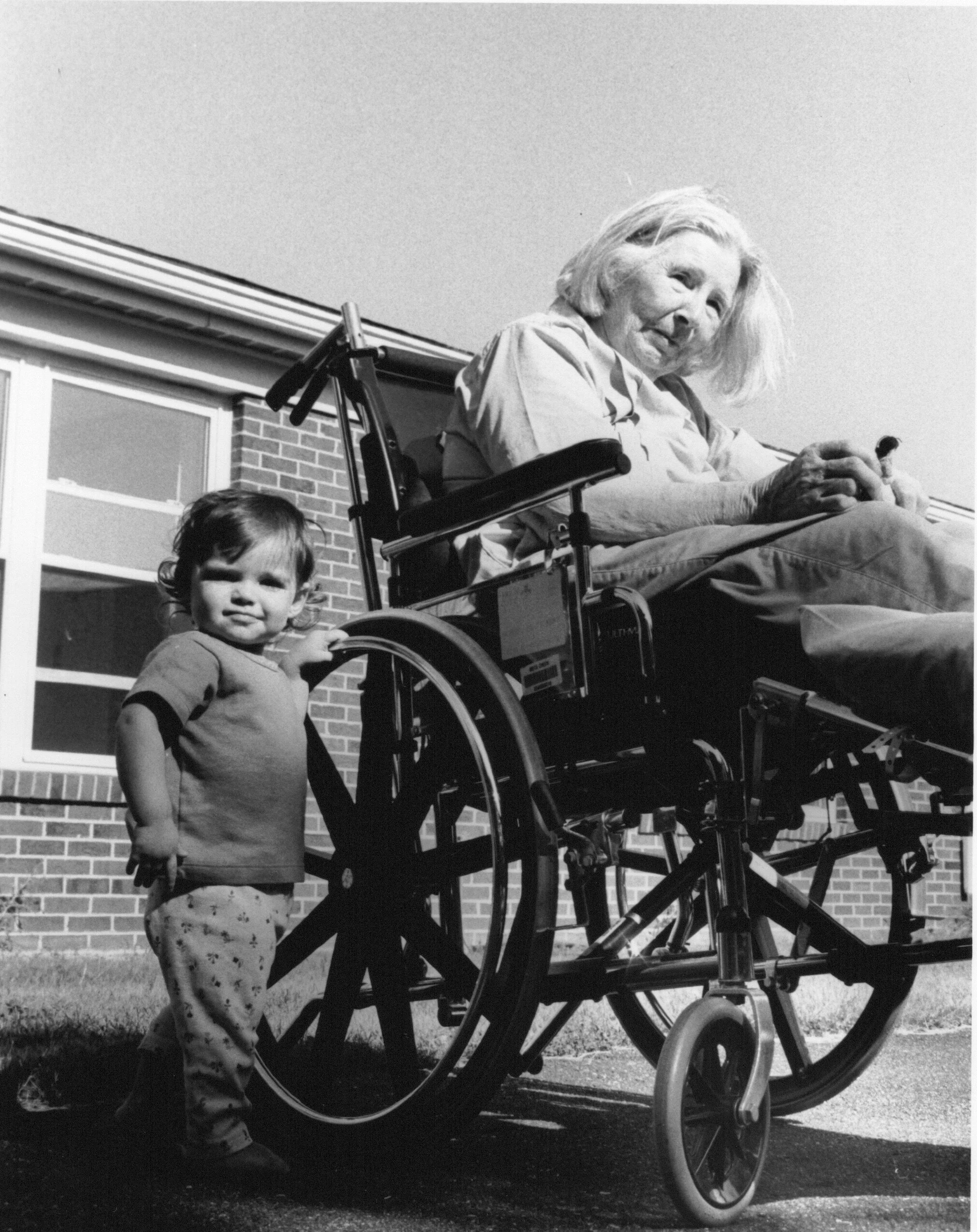This is my Diane Arbus phase. Thankfully it only lasted the one frame.
I never cared for her work. I looked it over from time to time as expected of a student of photography. It is a part of the canon. I understand Arbus’s view that her time with “freaks” elicited, as she said, feelings of both shame and awe. And I appreciate the concept when manifested in street photography, but with her work, nearly portraits, it felt staged. Like voyeurism, a schtick rather than a decisive moment.
It was definitely not what I wanted when I made this photograph: two of my favorite people, my mother, and my first born daughter. I did not want to make a spectacle of either one. I was looking for something quite different. So this photo has been consigned to a folder with contact sheets and negatives these last two decades.
They were in different phases of life: one just entering and only recently able to stand on two feet, one leaving, now unable to stand on two feet. One adding new words every day, one barely speaking.
But in this photo neither one looks the way they typically did.
To be sure, my mother’s age and failed memory generally left her looking vague. Her internment was recent, her accommodations unfamiliar, and she was cared for by people who, no matter how kind they were, were undeniably strangers. Even so my mother was ordinarily cheered by the presence of her grandchildren. Her engagement, however fleeting, rose noticeably. She would reach for them, extending a quaking hand gnarled by arthritis, while at the same time reaching for some forgotten word, murmuring quietly, emitting gasps that neared recognizable syllables . Her eyes would quicken and dart from the child to the parent fastening to some connection. For a moment knowing that she too was connected. It pleased her to hold them in her lap. My daughters were too young to be intimidated, not yet alarmed by the old lady in the wheel chair—not yet resistant to the common room filled with the aged, tanged with senescence, where every eye but her own was rheumy.
Likewise the hooded eyed, barrel chested “you talkin’ to me?” kid grasping the chair and defying the lens is unfamiliar. Ordinarily I saw whimsy, curiosity, a twinkling eye, and above all, a smile.
In many ways what makes this photo unusual among my collection, what gives it its peculiar aura, is merely a series of rookie errors. It is too contrasty. If I’d been more interested in a grey card, I might have rescued some definition around Isabella’s eyes-maybe the twinkle would have been visible-or maybe even the detail on her animal slippers. If I had understood the zone system with its pushes and pulls maybe the sharp contrast between lower left and upper right would not be so stark.
But the starkness may be what makes this interesting. The contrast is bad but the highlights are not completely blown out, nor is the shadow black. My mother’s hair is still defined even in its straw-like whiteness against the sky, its wispiness foretelling something.
I took the kids all those times to cheer my mother, I told myself. More likely I could not go alone.
In her Aperture Monograph Diane Arbus speaks about photographing the unusual: “When it comes time to go, if I have to take a bus somewhere or if I have to take a cab uptown, it’s like I’ve got a blind date. . . .And sometimes I have a sinking feeling of, Oh God it’s time to go and I really don’t want to go. And then once I’m on my way, something terrific takes over about the sort of queasiness of it…”
Oh God it’s time to go and I really don’t want to go. How that captures my feelings during the interminable three years of my mother’s wane. Nothing terrific ever took over, but a comprehension of my particular covenant settled the queasiness so I could do it one more time.
Post script. This is a photo taken perhaps a year later, same facility, different daughter.


